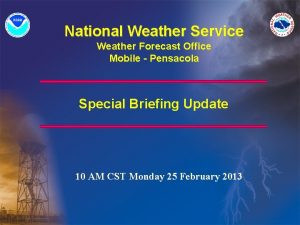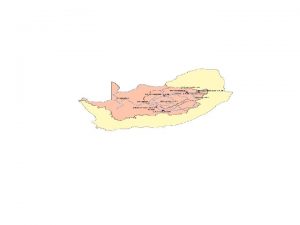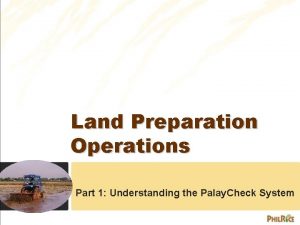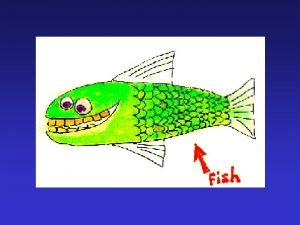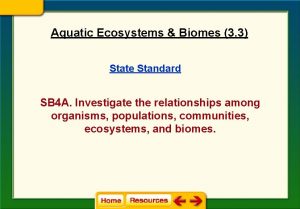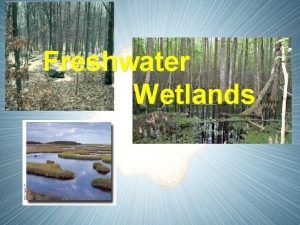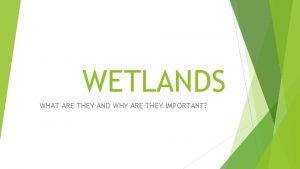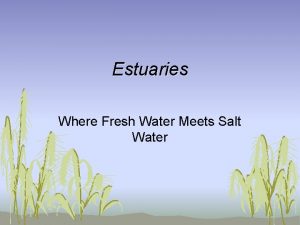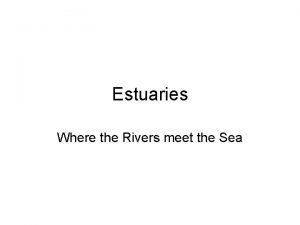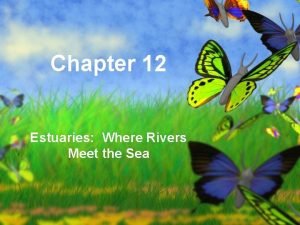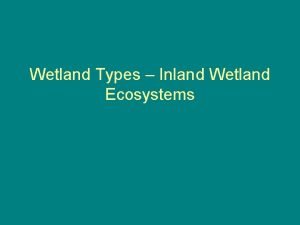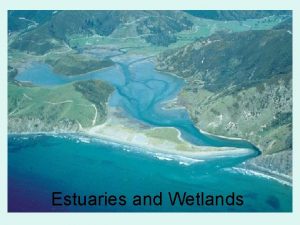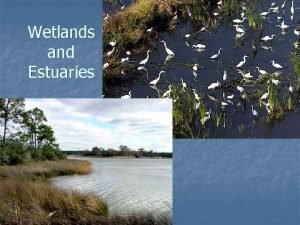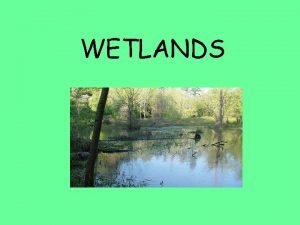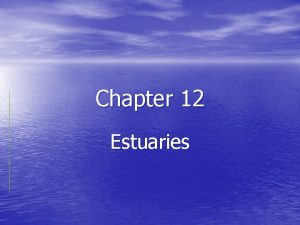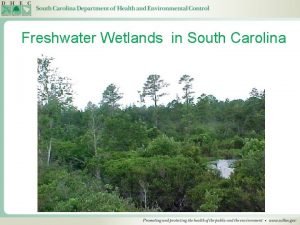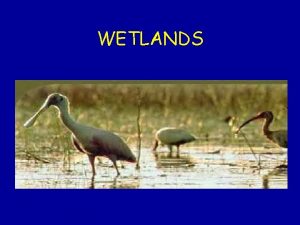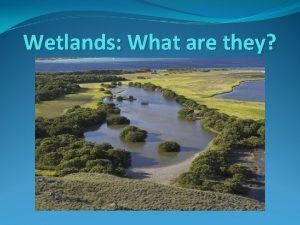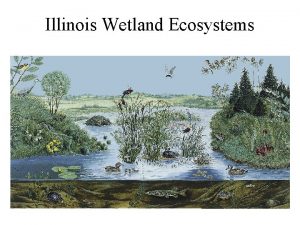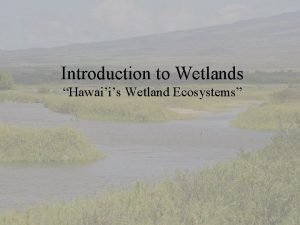WETLAND ECOSYSTEMS The wetlands lakes estuaries river flood













- Slides: 13

WETLAND ECOSYSTEMS

• The wetlands - lakes, estuaries, river flood plains, mangroves, coral reef and other related ecosystems • Wetlands are shallow water bodies in which water keeps up for most part of the year and recedes below the surface level during the dry season • The biotic community undergoes changes from aquatic/marshy to mesophytic types in space and time • These are complex hydrological and biogeochemical systems and have been recognized as distinctly separate ecosystems between the terrestrial and aquatic ones.

• The Ramsar Convention defines wetlands as area of marsh, fen, peat land or water, whether natural or artificial, permanent or temporary, with water that is static or flowing, fresh, brackish or salt, including areas of marine water, the depth of which at low tide does not exceed six metres • However, it does not indicate the same for other aquatic bodies

• 2 nd February - World Wetlands Day • It marks the date of the signing of the Convention on Wetlands on 2 February 1971, in the Iranian city of Ramsar on the shores of the Caspian Sea - Ramsar Convention (1971) • This definition emphasizes three key attributes of wetlands: – Hydrology which is a degree of flooding of soil saturation – Wetland vegetation (hydrophytes) – Hydric soils.

• There are three main types of wetlands viz. , bogs, marshes, and swamps • Bogs form in depressions left by ancient ice sheets • Sphagnum moss grows well in the acidic water of bogs. Bogs

• Marshes are shallow flooded areas along rivers • Cattails and other tall grasses live in marshes Marshes

• Swamps are actually slowly flowing shallow rivers which look like flooded forests • Although not all wetland areas are covered by water year round, they still have enough moisture content and the correct soils to support their specific aquatic plants and animals

• Another important wetland area is the estuary • Estuaries are formed where rivers meet the sea • Contain a mixture of fresh and salt water • Estuaries are important nursery areas for many types of fish and shellfish • Waterfowl also depend heavily on estuaries for nesting, feeding and resting place during migration

WETLANDS OF INDIA • Glaciatic Wetlands (e. g. , Tsomoriri in Jammu and Kashmir, Chandertal in Himachal Pradesh), • Tectonic Wetlands (e. g. , Nilnag in Jammu and Kashmir, Khajjiar in Himachal Pradesh, and Nainital and Bhimtal in Uttaranchal), • Oxbow Wetlands (e. g. , Dal Lake, Wular Lake in Jammu and Kashmir and Loktak Lake in Manipur and some of the wetlands in the river plains of Brahmaputra and Indo-Gangetic region. Deepor Beel in Assam, Kabar in Bihar, Surahtal in Uttar Pradesh) • Lagoons (e. g. , Chilika in Orissa) • Crater Wetlands (Lonar lake in Maharashtra)

• Salt water Wetlands (e. g. , Pangong Tso in Jammu and Kashmir and Sambhar in Rajasthan) • Urban Wetlands (e. g. , Dal Lake in Jammu and Kashmir, Nainital in Uttaranchal and Bhoj in Madhya Pradesh) • Ponds/Tanks, man-made Wetlands (e. g. , Harike in Punjab and Pong Dam in Himachal Pradesh) • Reservoirs (e. g. , Idukki, Hirakud dam, Bhakra-Nangal dam) • Mangroves (e. g. , Bhitarkanika in Orissa) • Coral reefs (e. g. , Lakshadweep) • Creeks (Thane Creek in Maharashtra) • Seagrasses, estuaries, thermal springs are some kinds of wetlands in the country.

IMPORTANCE OF WETLANDS • Provide food for many animals. • Provide important refuges for wildlife • Provide opportunities for recreation activities such as boating, swimming, bushwalking and bird watching • Provide a natural water balance and help to provide protection against floods

• Give water quality protection in the catchment areas by filtering pollutants • Provide nursery areas and breeding grounds for fin- and shellfishes and wildlife • Provide vital habitat for some species of threatened fauna • Provide refuge for migratory water birds to breed • Provide opportunities for scientific research and a source of education for the community

 National weather service pensacola
National weather service pensacola Vaal river flood
Vaal river flood Passaic river hydrograph
Passaic river hydrograph Wetland tillage
Wetland tillage 2013 apes frq
2013 apes frq Biome sb
Biome sb An ecosystem in which water either covers the soil
An ecosystem in which water either covers the soil Submerged gravel wetland
Submerged gravel wetland Why are wetlands important for biodiversity
Why are wetlands important for biodiversity Examples of producers
Examples of producers Why estuaries are important
Why estuaries are important Types of estuaries
Types of estuaries 5 importance of estuaries
5 importance of estuaries Estuaries and coasts
Estuaries and coasts
